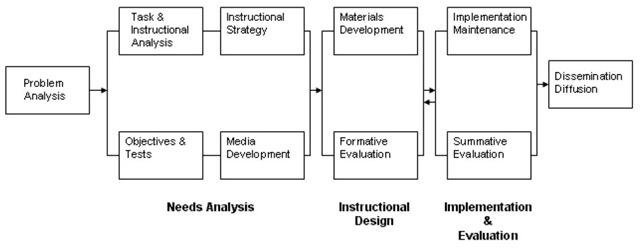Smart instructional design
Smart instructional design
LEARNING DESIGN
Learning Design is the framework that supports learning experiences. It refers to deliberate choices about what, when, where and how to teach. Decisions need to be made about the content, structure, timing, pedagogical strategies, sequence of learning activities, and the type and frequency of assessment in the course, as well as the nature of technology used to support learning.
INSTRUCTIONAL DESIGN
The goal of instructional design is to bring about behavioral change. After all, we don’t train people to do things the way they’ve always done them. And as instructional designers, most of us, on some level, are accountable for the success of that training. So, beyond designing highly engaging learning solutions, what can we do to ensure people actually change their behavior? How can we make sure our courses translate into measurable results for the individual and the organization?
We might be tempted to shift too quickly into design mode without a strategy for true performance change and ensuring it produces measurable results. And research shows that we will most likely fail our learners and the organization. Why? We’ve done everything right! We’ve identified the target audience and what successful behavior looks like. We’ve designed meaningful learning activities that allow learners to practice and master the desired behavior.
How could we possibly fail? Because our learners may not want to change their behavior. Sure, they’ll complete the course because their supervisor directed them to, and maybe they’ll even give it a high rating. But on the most basic level, people are resistant to change.
How is learning design different from instructional design?
You’ll also often hear this field of work called “instructional design” — in fact, following industry standards at the time, we also used this nomenclature when we first began helping educators create courseware. But we quickly made the jump to “learning design”.
Why Use an Instructional Design Model?
An instructional design model is used to define the activities that will guide the development of eLearning projects. It allows you to communicate the purpose and reason behind a strategy. A framework gives you the birds-eye view of all the major components that have to be included in the course
Instructional Design Models
The most popular instructional design models and techniques including ADDIE, Seels and Glasgow ISD model, Dick and Carey Systems Approach model, Rapid ISD model, and the SAM model.
Please note that top instructional designers do not follow any particular approach, but instead choose whatever technique best suits the specifics of a course’s audience and content.
The first, and probably the most popular model is ADDIE. It is a classic model and all other instructional design models are rooted in it. So, what does ADDIE stand for?
It stands for:
Analysis
Design
Development
Implementation
Evaluation

In the Analysis phase you clarify problems, define goals and objectives, and collect necessary data. You also define audience characteristics, the content to be included, the learning environment, and the technical requirements. For example, you may find that training isn’t the best solution for the problems you’ve been asked to solve; or that computer-based training will be a better fit for your audience than web-based training. Your findings might not meet your stakeholders’ expectations, so it’s important to capture the details of your research and back up your training suggestions with solid data.
In the Design phase you write objectives, and craft the structure and sequencing of the course. You also create a project management plan with deadlines, milestones, implementation details, and possibly budgeting. When you’re done, you’ll have a blueprint for your course and its delivery methods.
In the Development phase, you bring your design to life by using text, storyboards, graphics, audio, and video, and by assembling all these elements into a compelling course.
In the Implementation phase, your course is delivered to its audience.
And, in the Evaluation phase, the effectiveness of your course is assessed by measuring the level of your audience’s learning and retention, and how well your project’s goals have been met. Although this is the final stage of the ADDIE model, you should actually be performing evaluation throughout the design process.
The Seels and Glasgow ISD model
Another model that is often used by many instructional designers is The Seels and Glasgow ISD model. Unlike ADDIE, it places design within the context of project management to ensure a course stays within time and budget constraints. Under this model, you conduct front-end analysis, develop the course, and perform evaluations.

The Seels and Glasgow ISD model consists of three phases:
Needs Analysis Management Phase, where you analyze and document instructional requirements and goals.
Instructional Design Management Phase, which is responsible for formulating instructional strategies, breaking down development into tasks, selecting delivery systems, and performing formative evaluations, and lastly,
Implementation and Evaluation Management Phase, which is responsible for developing and producing the course materials, delivering the course, and evaluating the results of the course.
Another approach to course design is The Dick and Carey Systems Approach Model. This model focuses on selecting and organizing the appropriate content for each module. It incorporates the learner’s needs, skills, and learning context into the course design. The Dick and Carey Systems Approach Model is based on theoretical principles of learning and Robert Gagné’s conditions of learning. This model is widely implemented by curriculum developers in higher education.
The Dick and Carey Systems Approach is composed of ten steps, which include nine basic steps and an evaluation of the effectiveness of instruction. Let’s take a look at each step.
During the first step, you conduct needs assessment to identify instructional goals.
Instructional Analyses are conducted to determine the skills and knowledge required for the goal.
During the third step you analyze learners in terms of skills, prior knowledge, and motivation.
After collecting and analyzing all the required information, you should begin writing performance objectives specifying the skills, the conditions, and the criteria for learning.
The fifth step involves the development of assessment instruments.
The sixth step requires you to develop an instructional strategy for presenting the information, testing, and learning activities.
Now that there is strategy in place, you can develop and produce instruction.
The eighth step involves collecting data for conducting a formative evaluation.
The ninth step requires you revise the lesson using the data collected from the formative evaluation, analysis, objectives, assessment instruments, and instructional strategies and content.
The final step involves conducting a summative evaluation to measure success of the instruction.
Rapid ISD model
The next model we will talk about is the Rapid ISD model. Instructional designers are always searching for ways to create their courses quickly and effectively. At the same time, they want the learning to be engaging and interactive. The Accelerated Learning Rapid Instructional Design (RID) model is ideal for those who work under tight deadlines, a limited budget, and constantly changing content. This model is all about accelerated learning design strategies and shortcuts. According to the RID model, people learn more from application with feedback than from presentations. It replaces media-heavy courses with activity-based courses. Even though the RID model makes courses more interactive and engaging, it does not incorporate analysis and evaluation phases, which are crucial in the development of an eLearning course. There are four phases in the RID model. They are Preparation, Presentation, Practice, and Performance.
During the Preparation phase, the learners are presented with learning objectives, which should be motivational and encouraging to make learners interested in completing the course.
Presentation is the next phase. During that phase, learners acquire new knowledge and skill. Instructional Designers should try to appeal to all learning styles and incorporate interactive presentations and discovery activities into the learning experience.
Practice – New knowledge and skills are integrated by incorporating games, hands-on activities, and skill building practice exercises as well as providing substantial corrective feedback to the learner
The fourth phase of the model is Performance – During that phase, the new knowledge and skills should be applied and the use of new knowledge and skills should be rewarded.
Successive Approximation Model (SAM)
The last Instructional Design model that we will consider is the Successive Approximation Model or (SAM). This is an agile instructional design model created by Michael Allen. The model emphasizes collaboration, efficiency, and repetition. According to Michael Allen, there is no perfect project; therefore, to create the best possible outcome, instructional designers should focus on producing usable products as quickly as possible. The model focuses on prototyping more heavily than other instructional design models do. With SAM, the goal is to take smaller, more flexible steps within a larger framework to achieve high quality in training and learning. SAM expects that mistakes will be made throughout the project. It also expects that stakeholders will change their minds or decide to make corrections along the way. Because of all these issues, SAM considers collaboration and early evaluation keys to successful completion of any project. The model enables instructional designers to move quickly through the initial phases of course design to a rapid prototyping. There are essentially two SAM models.
SAM 1 is mostly for small simple projects that do not require extensive development or any specialized skills such as programming or graphic design. SAM 1 is composed of the following three steps:
Evaluation / Analysis
Design
Development
The process cycles through three iterations, modifying and testing prototypes along the way. Because ideas are frequently evaluated, instructional designers can create usable courses relatively quickly and effectively while avoiding costly mistakes.
SAM 2, on the other hand, is for large projects that require advanced development skills. This model is divided into the following three phases: Preparation Phase, Iterative Design Phase, and Iterative Development Phase.
The Preparation Phase is responsible for gathering background information and brainstorming ideas about the project together with stakeholders and your entire team.
Iterative Design Phase is further broken into the following three steps:
Prototype,
Evaluate, and
Design.
During this phase, instructional designers and their teams rotate through design, prototype, and review, making decisions and refining their prototypes prior to making critical mistakes.
Iterative Development Phase is further broken into the following three steps:
Develop
Implement, and
Evaluate.
This phase begins with the design proof, and produces three deliverables known as alpha, beta, and gold releases.
